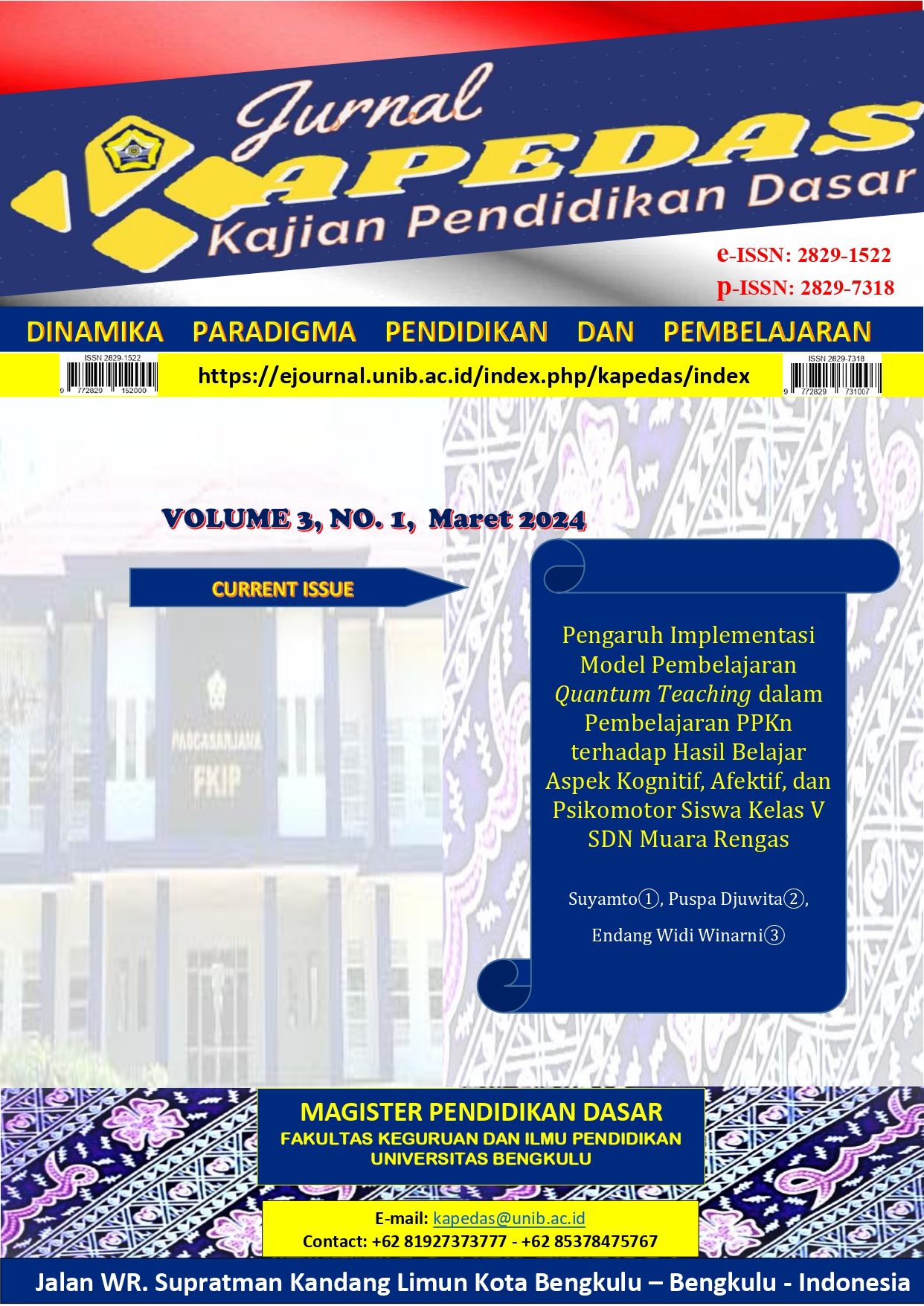Main Article Content
Abstract
This study aims to describe the analysis of multiple choice test items for the group 2 school exam, South Seluma sub-district, Seluma district for the 2021/2022 academic year. This research uses a qualitative type with a qualitative descriptive method. The instrument in this research is documentation. The technique used in collecting data in this study is member check. The analysis technique used in this research is descriptive. Based on the results of the study, it shows that: (1) Level 1 LOTS is 30% (already according to standards), level 2 MOTS is 37.50% (not according to standards), and level 3 HOTS is 32.50% (not according to standards). standard). (2) The quality of the language aspect shows that the questions are in the medium criteria with an average of 0.79 and a percentage of 79%. The quality of the material aspect shows that the overall item is strong with an average of 0.83 and a percentage of 83%. The quality of the construction aspect shows that the items are moderate with an average of 0.75 and a percentage of 75%. Based on the results of the study it can be concluded that not all exam questions meet Puspendik standards.
Article Details
Copyright (c) 2024 Yoyo Lukito, Abdul Muktadir, Pebrian Tarmizi

This work is licensed under a Creative Commons Attribution-ShareAlike 4.0 International License.

Karya ini dilisensikan di bawah Creative Commons Attribution-ShareAlike 4.0 International License .
References
-
Basuki, I. & Hariyanto. (2014). Asesmen Pembelajaran. Bandung: PT Remaja Rosdakarya.
BSNP. (2018). Buletin BSNP: Media Komunikasi dan Dialog Standar Pendidikan. Jakarta: BSNP.
Creswell, (2010). Research Design: Pendekatan Kualitatif, Kuantitatif, dan Mixed (Ahli bahasa: Achmad Fawaid), Yogyakarta: Pustaka Pelajar.
Puspendik. (2019). Panduan Penulisan Soal HOTS-Higher Order Thinking Skills. Jakarta: Kementerian Pendidikan dan Kebudayaan.
Puspendik. (2017). Panduan Penulisan Soal. Jakarta: Kementerian Pendidikan dan Kebudayaan.
Safari, M.A. (2019), Evaluasi Pendidikan: Penyusunan Kisi-Kisi, Penulisan, dan Analisis Butir Soal. Penerbit Erlangga.
Sugiyono, (2018), Metode Penelitian Kuatutatif Kualitatif dan R&D. (Bandung: Alfabeta. 2018).
Winarni, E. W,. (2018b). Teori dan Praktik Penelitian Kuantitatif Kualitatif Penelitian Tindakan Kelas (PTK) Reseach And Development (R&D). Jakarta: Bumi Aksara.
References
BSNP. (2018). Buletin BSNP: Media Komunikasi dan Dialog Standar Pendidikan. Jakarta: BSNP.
Creswell, (2010). Research Design: Pendekatan Kualitatif, Kuantitatif, dan Mixed (Ahli bahasa: Achmad Fawaid), Yogyakarta: Pustaka Pelajar.
Puspendik. (2019). Panduan Penulisan Soal HOTS-Higher Order Thinking Skills. Jakarta: Kementerian Pendidikan dan Kebudayaan.
Puspendik. (2017). Panduan Penulisan Soal. Jakarta: Kementerian Pendidikan dan Kebudayaan.
Safari, M.A. (2019), Evaluasi Pendidikan: Penyusunan Kisi-Kisi, Penulisan, dan Analisis Butir Soal. Penerbit Erlangga.
Sugiyono, (2018), Metode Penelitian Kuatutatif Kualitatif dan R&D. (Bandung: Alfabeta. 2018).
Winarni, E. W,. (2018b). Teori dan Praktik Penelitian Kuantitatif Kualitatif Penelitian Tindakan Kelas (PTK) Reseach And Development (R&D). Jakarta: Bumi Aksara.
